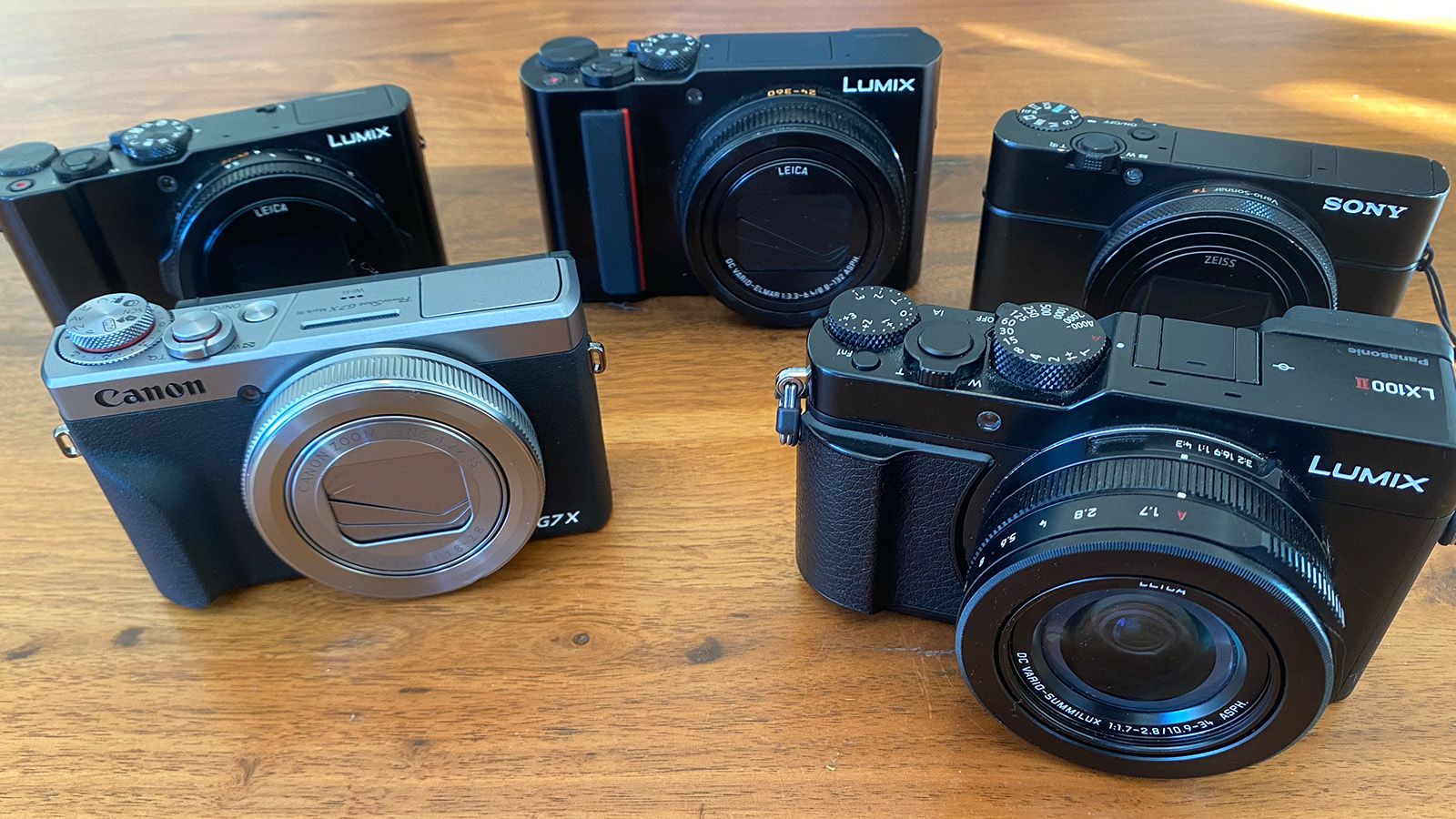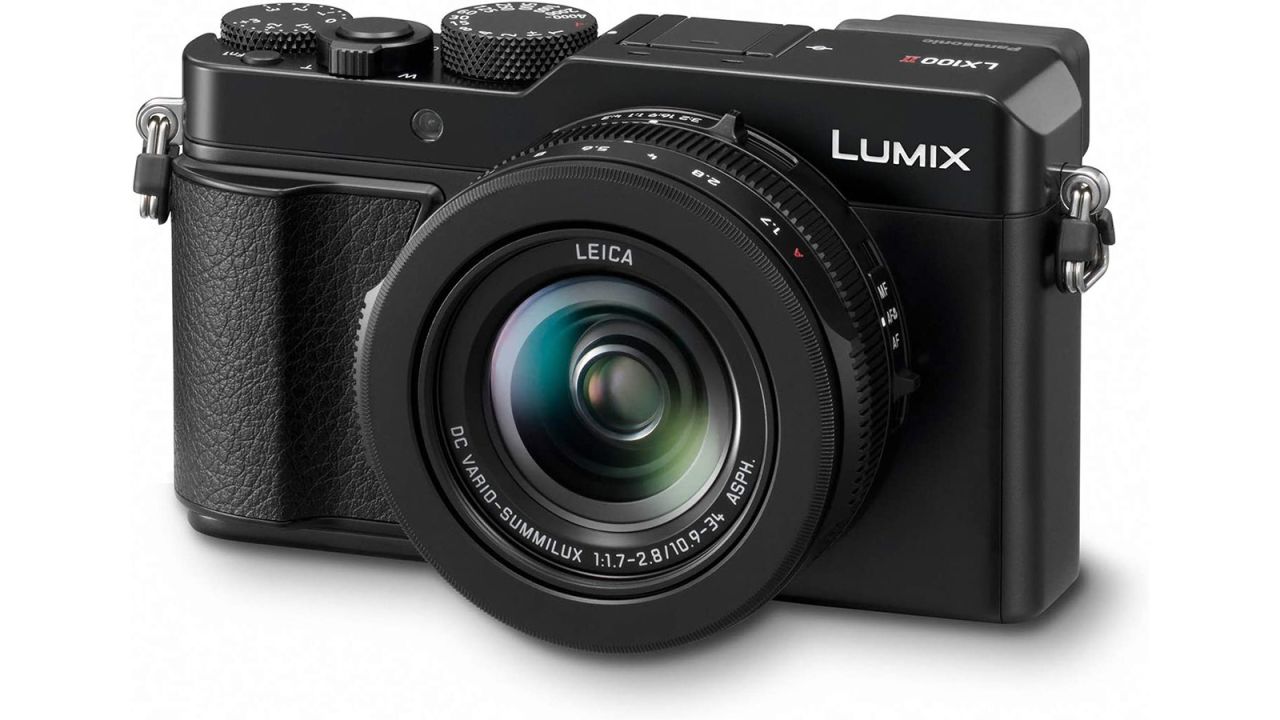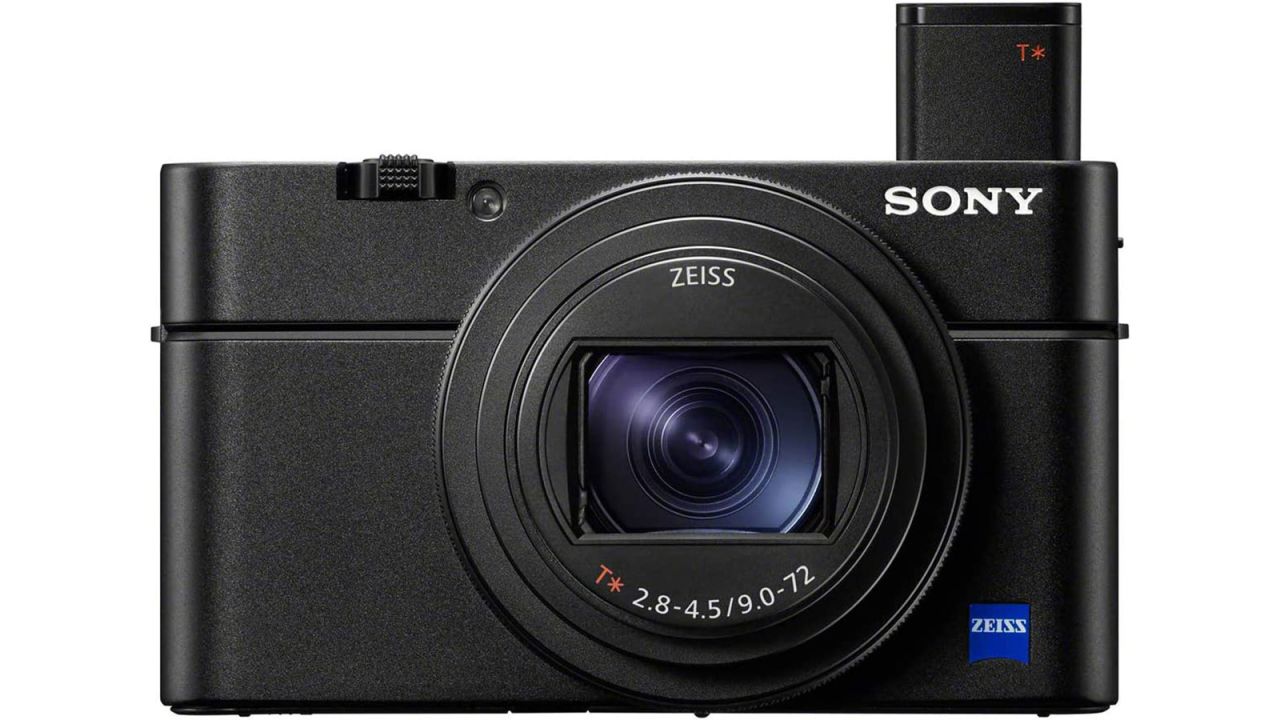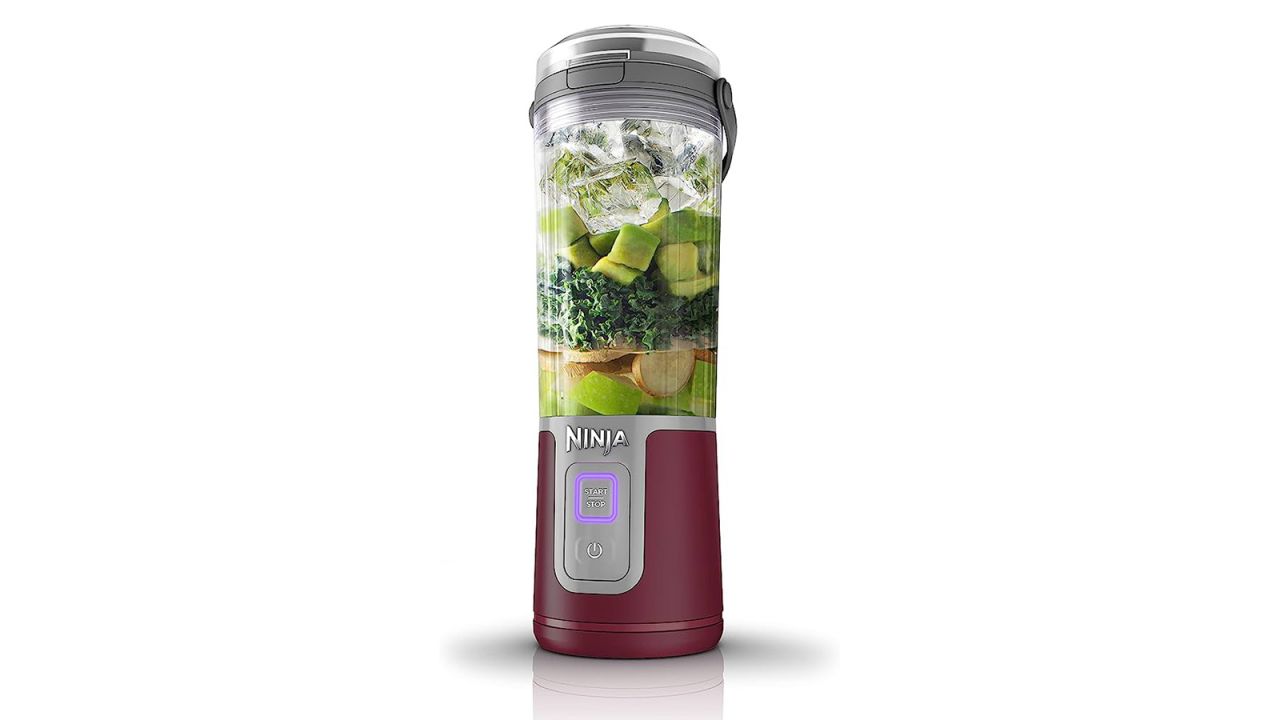They say the best camera is the one you have with you. And most people these days already have a great camera with them —?according to Pew Research, 97% of Americans carry a smartphone, with?convenient, powerful cameras that have profoundly altered the landscape of photography, pioneering new genres, building social networks and generally leading to human beings taking more photos than ever before — an estimated 1.75 trillion images captured just this past year.
While dedicated camera sales have slipped considerably, there’s still a place for them. On a sunny fall day in Boston, we saw hundreds of tourists and locals wandering the city, plenty carrying DSLRs with long, powerful lenses — the kind of rig that screams “serious photographer” — along with a few men in fancy sneakers cradling expensive Leicas. Everyone else was using their phones.
But the compact camera does still have a place in the age of smartphone photography. Data from the camera industry suggests that far fewer people are purchasing point-and-shoot cameras, but the latest models offer the manual control, large sensors and zoom range that most smartphones lack, in a package that isn’t that much bigger. And many younger photographers have been turning to point-and-shoot cameras, embracing their manual controls and focus on shooting over sharing.
So we tested the leading models on the market to see which ones might fit into your lifestyle — and how.
With the biggest sensor and most flexible, accessible manual controls of all the compact cameras we tested, the LX100 II gives you the shooting experience of a "real" camera in a package that fits in a (coat) pocket.
The Sony RX100 VII, the latest in the long-running premium compact camera series, gives you tons of shooting modes and great video, though its small size means fewer manual controls.
The best point-and-shoot camera overall: Panasonic Lumix LX100 II
$998 $798 at Amazon
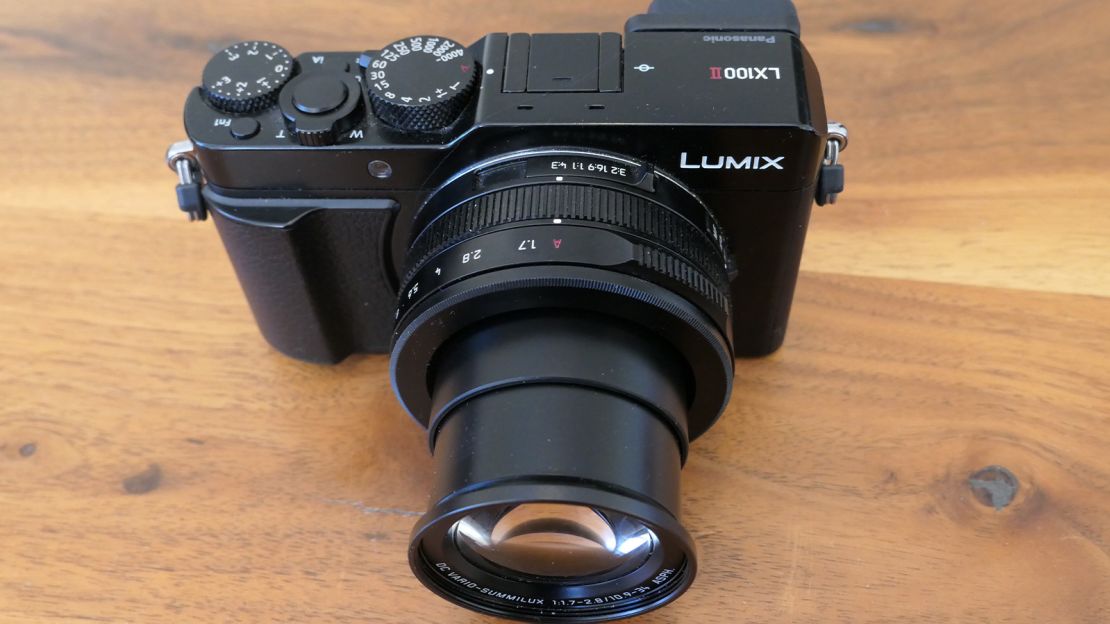
The Panasonic LX100 II has one big advantage over its compact rivals — it boasts a Micro Four Thirds sensor, much larger than the 1-inch sensors featured in most point-and-shoots, meaning better image quality and low-light performance than the competition. The LX100 II is the largest camera we tested, but since all of these cameras demand more space in your coat pocket or bag than a smartphone, if you’re going to carry a dedicated camera at all the bigger Micro Four Thirds sensor is reason enough to sacrifice some pocketability for the LX100 II.
The LX100 II is configured to give the shooter plenty of control over creative decisions, with full manual controls for aperture, shutter speed and exposure compensation. The dials and focus ring have a substantial feel, which reminded us of using a vintage film camera. We never knocked them out of place accidentally, which was a concern with some of the smaller, less substantial controls on other models.
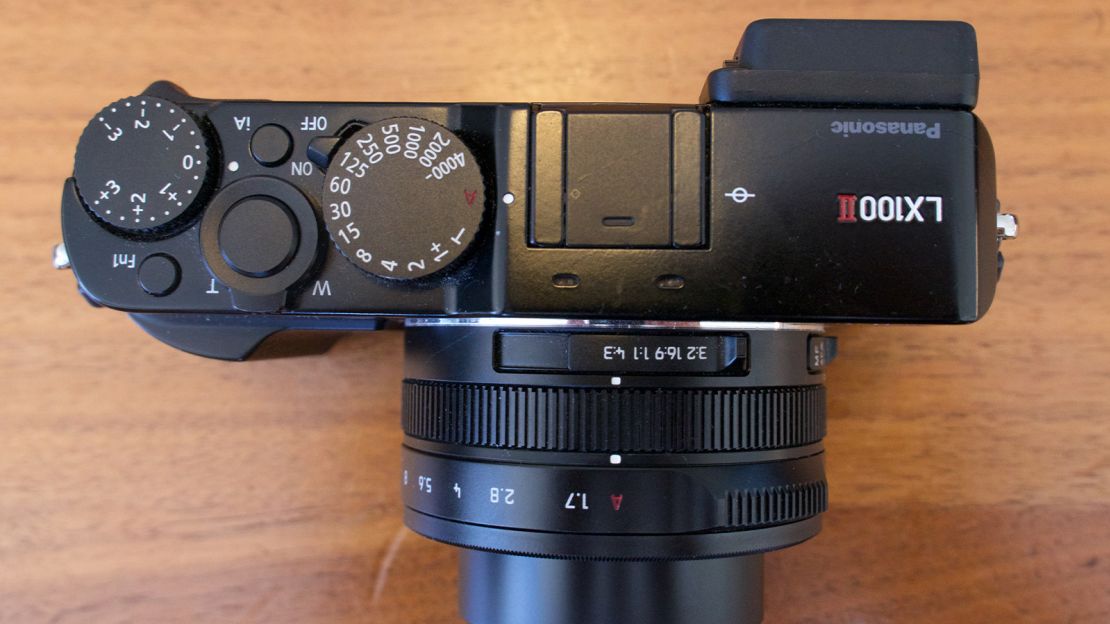
While we appreciated having this level of manual control, if you prefer to shoot in automatic mode, a single button on the top panel will instantly switch you into that mode, preserving your manual settings. Compared to other compelling models, such as the Sony RX100, which rely much more on digital menus that are accessed through the rear LCD screen, the LX100 is much easier to adjust on the go in a variety of shooting conditions — it’s a level of control we didn’t get from the other cameras we tested, and really different from using a smartphone. With five additional customizable buttons, you can really fine-tune your experience.
The LX100 II also features an electronic viewfinder (EVF) that comes in very handy, especially on bright days when an LCD screen can be hard to read. The viewfinder is bright and accurate, though there is a noticeable lag in refresh time, which can be frustrating when you’re trying to work fast. Of course, the rear-mounted EVF adds depth to the body, but it feels like a good trade-off. On the negative side, the touch-sensitive LCD screen doesn’t tilt or articulate, which limits its utility and makes the EVF that much more essential.
The 24-75mm lens, which opens as far as f/1.7 at its widest angle, is sharp and fast. The retractable zoom lens performs capably, but it feels like the slowest and most fragile component of this camera. There is a toggle for zoom on the top panel that feels both cheaper and more sluggish than the rest of the camera. It also slows down the start-up time, so you can easily miss your shot while waiting for the lens to unfurl.
Overall, though, this is a classy device with a traditionalist mindset that still packs the contemporary features of a great point-and-shoot camera. For photo enthusiasts looking to step up from a camera phone or a more basic point-and-shoot, the Lumix LX100 II is a major upgrade with all the essential features for expanding your photographic horizons.
Best point-and-shoot camera for video: Sony RX100 VII
$1,298 at Amazon

A photo-enthusiast camera with advanced video capabilities, the popular but pricey RX100 VII has a lot going for it, and there’s a lot going on under the hood of this small device. The RX100 VII is notable for its fast autofocus, based on advanced AI, and its eye-tracking for people and animals. The intelligent autofocus, which is borrowed from much more expensive Sony mirrorless cameras, provides smooth and accurate focus while tracking moving subjects. It even has a pop-up EVF that works well without adding bulk to the camera’s slim form.
The Sony gave us better video results than the other cameras we tested, with 4K support adding to its best-in-class video performance. It also has a microphone jack, which is a big plus for serious video shooters.
A bunch of well-thought-out automatic modes make the Sony easy to use without too much menu-diving. The intelligent auto setting got us solid results in most situations, but there are a range of capture modes like backlight, night, sports, scene, slow motion, high frame rate and panoramic to suit most situations. Each mode gives you a well-considered set of controls on the touchscreen that suit the situation.
A major selling point is its long zoom, which extends from 24mm to 200mm, going far beyond the range not just of most phones but of most compact cameras. The Zeiss-branded lens only opens to f/2.8 at its widest angle, however, so it won’t capture as much light indoors as the LX100 II. The in-camera image stabilization helps, but you still lose out to the Panasonic on the ability to create background blur (bokeh) and performance indoors and in other lower-light situations.
The RX100 VII is, however, more compact than the LX100 II, coming closer to actual pocketability (by which we mean coat pocket — none of these cameras will fit comfortably into a pants pocket like a smartphone). The design is sleek, with smooth surfaces and a minimalist layout of buttons and dials.

On the one hand, that’s great since with all of its under-the-hood features, the RX100 VII packs a lot of functionality into a svelte and efficient package. But this is also one of the camera’s major drawbacks, as ergonomics suffer. You don’t get the big-camera shooting experience you get from the Panasonic LX100 II, since you don’t have the top-plate manual adjustments or focus and aperture rings.
With only one dial for program mode on the top, the user is much more reliant on the digital menus through its limited touchscreen LCD?(which feels like a step down from using a smartphone camera), and tiny buttons on the camera’s back. When it comes down to it, the RX100 VII feels a bit stingy compared to the LX100 II.
For larger or older hands, the lack of tactile controls can make the camera hard to master or use quickly. Not to mention, it’s easy to drop this camera, as its satiny surface can be slippery. Some kind of grip would be very helpful, but that would come at the cost of size. Still, it’s a powerful and agile camera for travel and everyday use, capable of producing very good still images and videos.
Who should buy a compact camera?
Compact cameras were designed to be so convenient and easy to use that you could simply “point and shoot.” Camera phones have inherited that legacy, and brought photography to a new level of ubiquity. So what is the value of a point-and-shoot or pocket camera today? Do they offer any advantages over the performance and immediate accessibility of a good camera phone?
The big question for many potential compact camera buyers is whether they’ll get better image quality. Today’s smartphones — loaded with multiple lens and sensor arrays and using image processing software to extract every drop of performance from those arrays — can produce amazing results in many challenging shooting situations, meaning that for most people cameras will not significantly outperform a smartphone on image quality, at least if you’re looking at images on screen as most people do nowadays.
In more challenging conditions, like low light or when you can’t get close to your subject, the benefits of a larger sensor and better zoom lens start to become more significant. Especially among the cameras with 1-inch sensors, image quality was fairly consistent across the models tested, and the larger sensors — in particular the Micro Four Thirds sensor in the Panasonic — made an even bigger difference. Improved image quality will be most noticeable if you’re making prints or viewing at higher magnification, but the creative controls that these cameras offer unlock possibilities that a camera phone cannot match.
But the real improvements over camera phones came in usability and versatility, which can enhance your photography experience. Physical focus rings, assignable buttons for important functions and a tactile shutter release button can improve ergonomics significantly, and not having to call up a camera app can let you capture images more quickly (so long as you have your camera in hand and powered up, of course).
Just how much of an improvement you get will come down mostly to your personal preferences and shooting conditions. Here are some of the key benefits:
? Improved image quality from a larger sensor
? Better ergonomics for shooting, especially for video
? Far better low-light performance
? Longer zoom ranges, with better quality
? Better video capture
The cameras we tested all pack a lot of processing power into compact bodies. If portability is key for you, then our selections will make for great choices. If image quality is your highest priority, then you’ll be better served by a DSLR or larger mirrorless system. You’ll get the benefits of interchangeable lenses, ever larger sensors, better battery life, more dedicated buttons and arguably better value.
How we tested
The cameras we tested have a lot in common: small bodies designed for everyday carry and fixed lenses (as opposed to interchangeable lenses found on larger camera systems). The lenses offer zoom capabilities that easily outperform smartphones.
They all shoot both still images and 4K video. They are all in the range of 20 megapixels, which is more than enough for most purposes. While most of these devices will not exactly fit in your jeans pockets, they are typically compact enough to slide into a coat pocket or small bag.
They have larger sensors — and therefore better base image quality — than phone cameras, but smaller sensors than those found in larger cameras like DSLRs, therefore our testing emphasized real-world shooting experience over tech specs and fine pixel-peeping.
As noted in our reviews of the individual cameras, still image quality was generally not the key differentiator among these models, as most produced similar results, with minor variations due to internal image processing that are more matters of taste rather than quality. We tried to re-create the situations where most people would find such cameras useful: exploring city streets, shooting in low-light conditions and shooting 4K video.
We placed a high priority on usability and ergonomics, because this is an area where a compact camera can offer real improvement compared to a camera phone. We prioritized ease of use for both digital and physical controls.
Other cameras we tested:
Sony ZV1
$748 648 at Amazon
Sony’s ZV1 is aimed squarely at vloggers and video creators. Its fully articulated LCD screen can flip into selfie mode, and it even has a mode for product placement. In many ways, this model shares its DNA with the RX100 VII. It has the same sensor with many of the same advanced features for autofocus and tracking. If video performance is your main priority, this camera really shines at almost half the price of its older sibling.
In some key ways, this camera is a stripped-down version of the RX100 VII. The lens is shorter but brighter (extending to 70mm compared to 200mm). It is missing the very useful pop-up EVF and the somewhat less useful pop-up flash, probably because these are less important for video shooters. There is no headphone jack but rather a single USB cable for power, video and audio. As a newer model, it also offers some advantages over the RX100 VII, especially its more sophisticated subject tracking system. The autofocus performance is a standout feature, besting the available options from Panasonic and Canon.
It isn’t really designed for still photography, however. The tactile controls are limited and the menus can be a chore to navigate — you’ll want to set it up to do what you need and leave it there for the duration of a shoot. The top panel offers a shutter button with a zoom ring, on/off and mode buttons, a video record button and a custom button that is set by default to background defocus function, for bokeh effect. Everything else is controlled through embedded menus accessed through the LCD. This makes it nearly impossible to shoot in manual or priority mode without a lot of fiddling with the screen, which is a big drawback for still photographers.
While the video quality is excellent and the camera is well optimized for video, the limited functionality for still photography makes it a niche performer. However, if video is your main interest, especially vlogging, this camera offers a lot of value for a reasonable price.
Sony ZV-1F
$500 $479 at Amazon
The Sony ZV-1F is a slimmed-down version of the ZV-1, with a fixed 20mm equivalent lens in place of the bigger camera’s 24-70mm zoom. This gives it a very wide verging-on-fisheye perspective that will be familiar to anyone who watches a lot of (or is interested in making) influencer videos, but is a little challenging for everyday photography.
The ZV-1F, even more than the ZV-1, is a camera meant for vloggers and other content creators, not “photographers,” and as such it drops many of the ZV-1’s more photography-oriented features (faster phase-detect autofocus, optical image stabilization, ultra-high-speed capture and RAW capture) that aren’t necessary in the world of selfies and product or technique demonstrations. You get a very capable microphone, and the ZV-1F can even double as a webcam over its USB-C connection (the high-quality lens and large sensor give you better results than many dedicated webcams, but it limits you to 1080 video — no 4K streaming, unfortunately).
Video quality was akin to that of the RX100 — clear and crisp with nicely saturated colors — and the microphone grabbed solid, clean audio. The 20mm lens gave us that webcam perspective (and it worked well as a webcam, with results on par with the Logitech we usually rely on). Still image quality is again comparable to the ZV-1 and other RX100-related compact 1-inch cameras in Sony’s lineup. While autofocus isn’t as fast as on the RX100 VI, and we found it challenging to keep up with fast-moving pets and children, it’s reasonably speedy enough to grab quick, unplanned shots. The background defocus button (right next to the shutter release) is handy for getting portraits as well. It’s a fun little camera to use — just limited.
Given the limitations, this isn’t really a street photography camera (if you were hoping for a half-price Ricoh GR, you are probably out of luck) but a point-and-shoot format video camera meant strictly for DIY content creation. It ends up in a weird place, really — in many ways it is less capable and flexible than a top-of-the-line smartphone camera (which a dedicated content creator is likely to have access to) and it isn’t as suitable for general photographic double duty like the more capable ZV-1 (which does as good a job for most vlogging tasks). We’d stick with a phone or spend the extra $200 for a ZV-1 if you really like the idea of a dedicated camera.
Panasonic LX10
$600 $498 at Amazon
The LX10 is a powerful, affordable compact camera capable of producing great stills and 4K video. Its Leica-branded 24-72mm lens is a solid performer across the whole range, and the touchscreen is smooth and useful, especially with its tap-to-focus function. The autofocus is fast and accurate. While it doesn’t have the feature set of the Sony RX100 or the generous controls of the Panasonic LX100, it has a balance of usability and performance that makes it a worthy choice at a much lower price.
There are a few sacrifices, compared to those models. Unlike the LX100 II, with its Micro Four Thirds sensor, the LX10 uses the more standard 1-inch sensor. Its touchscreen LCD flips in one direction only, instead of a fuller range of motion. It does not quite match the RX100 or ZV1 for video quality. There is no electronic viewfinder, which makes sense for a camera of this size but can be limiting in many common shooting conditions.
It has some upsides too. In video mode, the LX10 is capable of 4K capture for up to 15 minutes at a time, compared to just five minutes for the RX100 VII. Unlike most small cameras, it has a dedicated aperture ring and an assignable wheel for shutter control, which makes manual and priority mode shooting possible. With three additional custom buttons, this camera is relatively easy to control and adjust on the go.
Overall the LX10 is a smooth performer that does the basics very well. It handles well with a modest learning curve. It is a good choice if pocketability is a priority while still giving shooters the right controls for creativity and versatility.
Panasonic Lumix ZS200
$700 $648 at Amazon
The standout feature of the ZS200 is its longest-in-class zoom lens, reaching all the way to 360mm. With over 15x zoom, it surpasses even the Sony RX100 VII’s impressive 24-200mm lens. Of course, there are trade-offs when packing so much lens into such a compact body: The lens only opens to f/3.3 and it is noticeably less sharp than its competitors. If you are wondering if it’s possible to have too much zoom, this camera might suggest so.
This model falls between the LX100 II and LX10, both in size and features. The layout is very similar to the LX10, while the form is more like the LX100 II, with its EVF and nonarticulating screen. This camera sports a 1-inch sensor like the LX10. The 4K video performance is not quite up to par with the best we tested. While the focal length is impressive, most users will be happier with other models.
Canon G7X Mark III
$750 $699 at Amazon
One of the smaller cameras we tested, The Canon G7X Mark III has some very attractive features. Although its 24-100mm zoom is not the longest, it opens to an unusually bright f/1.8-2.8. The zoom moves smoothly and surely. The contrast-detect autofocus is not up to par with Sony’s models, but it will do well in most conditions.
The G7 is a popular vlogger camera. It has a coveted 3.5mm microphone input for better-quality audio. The touchscreen flips up into selfie mode. The Mark III adds the ability to livestream directly to YouTube.
In general, it feels a step behind the others. The build quality is less robust than most of its competitors. The camera uses more plastic and the LCD screen feels fragile. While it is capable of producing great stills and video, it’s hard to make the case for this camera over the Sony ZV1 or RX100.
Canon PowerShot V10
$430 at Amazon
If you’re old enough to remember the flip camera craze of the 2000s — when simple, pocketable video cameras filled the gap before phone image capture became good enough to make most cameras more or less obsolete — the Canon PowerShot V10 will feel familiar. Canon’s goal with this updated version is similar:? to make high-quality video capture for vlogging as easy as possible and at a price that makes it less painful to upgrade from smartphone video.
If you are primarily interested in photography, this device isn’t for you. The form factor and configuration are designed for video, and specifically for taking videos of yourself. The small, square body comes with a kickstand and a screen that flips up for self monitoring. It has the same 20-megapixel sensor as the Sony ZV-1F — another recent vlogging-centric offering — and a fixed 19mm f/2.8 lens. Like other vlogging cameras, the angle of view is extremely wide, like a webcam. Video and still performance are generally good, if not outstanding, among the available options, but the sensor is larger than what is supplied on today’s phones, so potentially you’ll get a bit better low-light performance and image quality within the V10’s very specific selfie-and-produce-demonstration niche.
To achieve simplicity, the V10 sacrifices a lot of user control and features that we might reasonably expect in 2023. The camera offers very few options for stills and is limited to JPEG only. The autofocus is a somewhat dated contrast-detect system, as opposed to a more modern phase-detect system, but is probably fine in the applications the V10 is intended for. Even the video specs feel a little underpowered compared to the latest iPhone (for example, the iPhone can shoot 4K at 60 frames per second (fps), as opposed to 30fps on the V10). While the device feels robust, it offers no weather sealing, which would be valuable on a camera meant for on-the-go use. Finally, battery life is poor, lasting less than an hour in video mode and rated for just 290 shots.
That said, if you are looking to get into vlogging, want bigger sensor image quality and want the fewest technical hurdles, this camera could be a good choice. But for anyone with general photography inclinations, if you want to give yourself some room to grow as your skills and knowledge evolve, you might find yourself outgrowing this camera rather quickly.?The Sony ZV cameras offer arguably better video and vlogging tools, and make somewhat better general-purpose stills cameras in a pinch, too. And if you’re interested primarily in still photography (or think you might be), you’d be better served by the other cameras we looked at for this piece.
